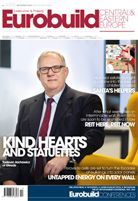Mark Robinson, CEE research specialist, Colliers International: It gives us the ability not only to work in the office but to be able to work from anywhere. It’s now kind of commonplace for employees, young or old, to be able to pop into a café and do some work. Companies are aware of this and it has been informing their decisions when it comes to leasing office space. For example, in the Colliers office I am sitting in, in Prague, there is room for app. 40 people, but we have more than 40 employees. If everyone came on the same day and sat in the office there would not be enough space for everybody. The office has been planned on the basis that not everyone would be here at the same time. Ten years ago we would be thinking: Ok, we have 55 employees or whatever it is, and therefore we need 55 spaces – which means a bigger office.
So it’s now typical for tenants to take up less space just because technology allows them to?
Not necessarily, because this is jus































































